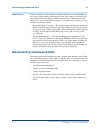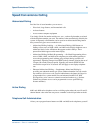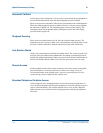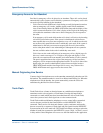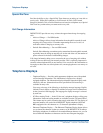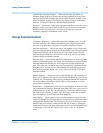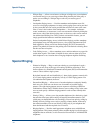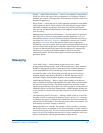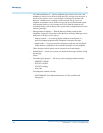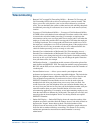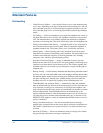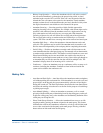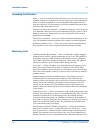
Messaging
123
Overview for Avaya IP600 Internet Protocol Communications Server
555-233-001 — Issue 5 — November 2000
B
• Ringing — Abbreviated and Delayed — Allows you to manually or automatically
assign one of four ring types to each call appearance on a telephone. Whatever
treatment you assign to a call appearance is automatically assigned to each of its
bridged call appearances.
• Ringer Cutoff — Allows the user of a multi-appearance telephone to turn audible
ringing signals on and off. Visual alerting is not affected by this feature. When
this feature is enabled, only Priority (three-burst) ring, Redirect Notification,
Intercom ring, and Manual Signaling ring at the telephone. Internal and external
calls do not ring.
• Multiappearance Preselection and Preference — Provides options for placing or
answering calls on selected call appearances. Ringing Appearance Preference
automatically connects you to the incoming ringing call when the user picks up
the handset. Idle Appearance Preference automatically connects you to an idle
appearance. Preselection allows the user to manually select an appearance.
Preselection is used, for example, when you want to reconnect with a held call or
activate a feature. Preselection can be used with a feature button. For example, if
you press an Abbreviated Dialing button, the call appearance is automatically
selected and, if you pick up the handset within five seconds, the call is
automatically placed. The Preselection option overrides both of the other
preference options.
Messaging
• Leave Word Calling — Allows internal system users to leave a short
preprogammed message (usually “Call” with the calling user’s name, extension
number, and the time of the call) for other internal users. When the message is
stored on the DEFINITY ECS, the Message Lamp on the called telephone
automatically lights. Leave Word Calling messages can be retrieved using a
telephone display, Voice Message Retrieval, or AUDIX. Messages may be
retrieved in English, French, Italian, Spanish, or a user-defined language.
• Audible Message Waiting — Places a stutter at the beginning of the dial tone
when a telephone user picks up the telephone. The stutter dial tone indicates that
the user has a message waiting. This feature is particularly useful for visually
impaired people who may not be able to see a message light. It is often used with
telephones that have no Message Waiting Lights. Audible Message Waiting may
not be available in countries that restrict the characteristics of dial tones provided
to users.
• Voice Messaging and Call Coverage — Often an AUDIX system is set up as the
last point on a call-coverage path, as shown in Figure 7 on page 113. A secretary
or colleague who answers a redirected call intended for you can also transfer the
caller to your AUDIX mailbox. The caller may prefer to leave voice-mail for you
if the message is personal, lengthy, or technical.
Many other options are available. For example, a caller can redirect a call from
the AUDIX system to an attendant. Or the caller can transfer to another extension
instead of leaving a message. You can even have the AUDIX automated attendant
answer all calls to the company and send calls to various extensions. In this case,
callers are instructed to enter keypad commands to direct the call.




